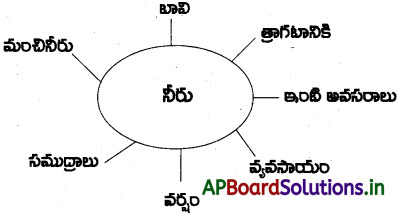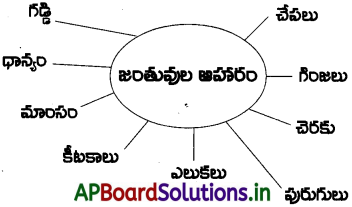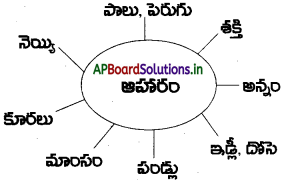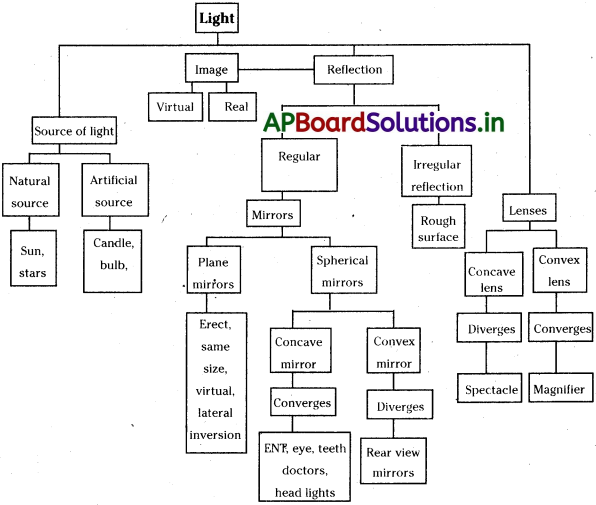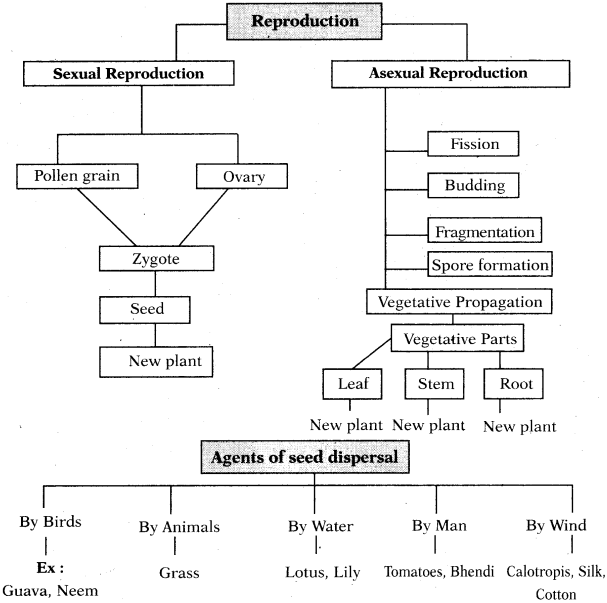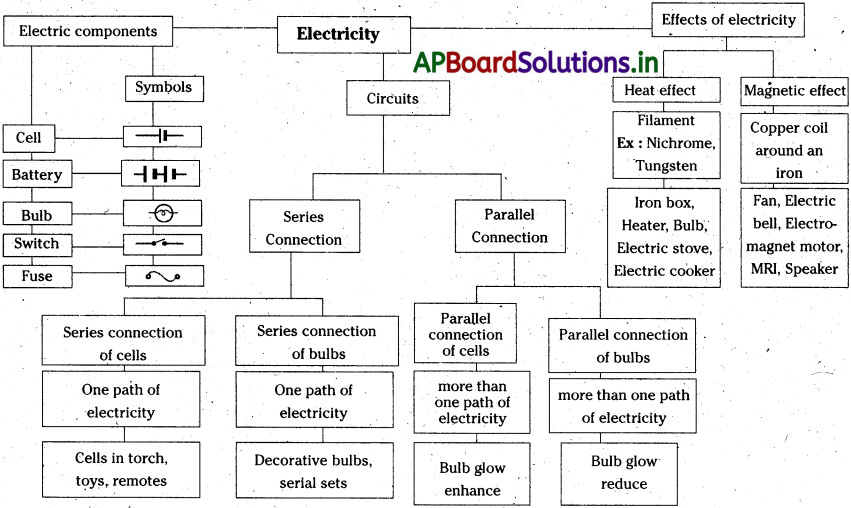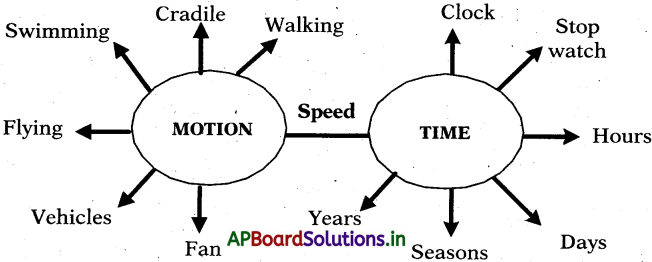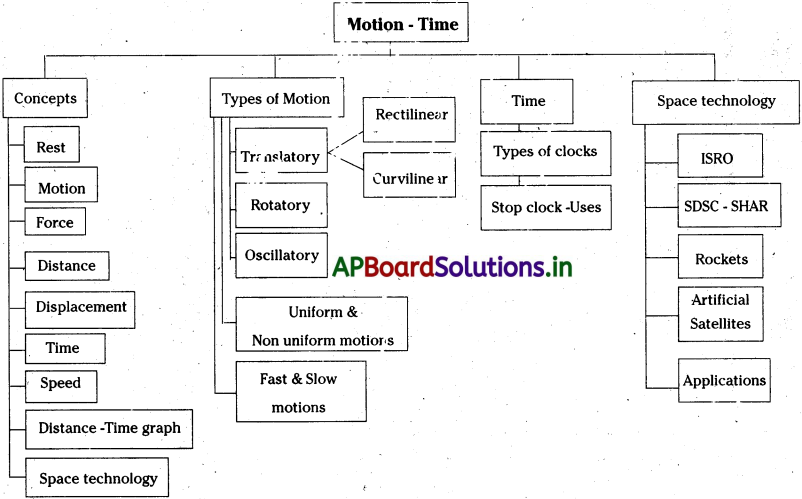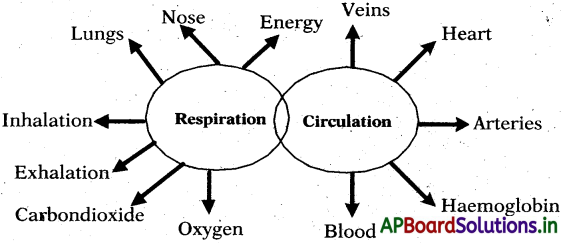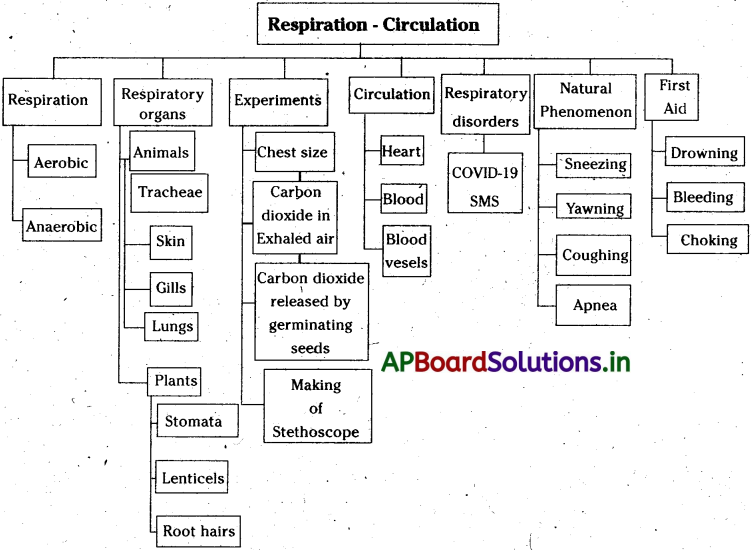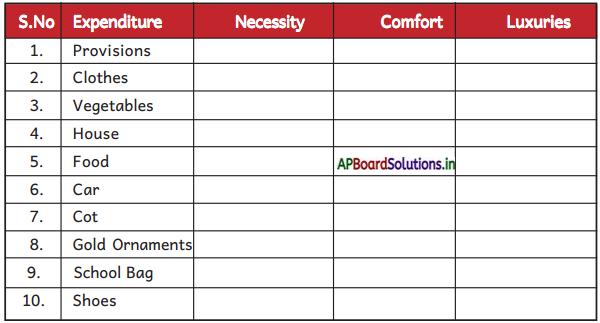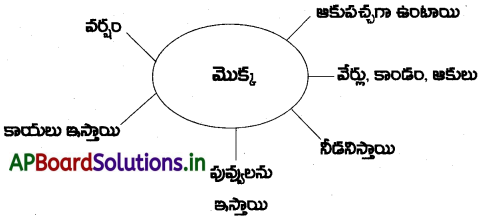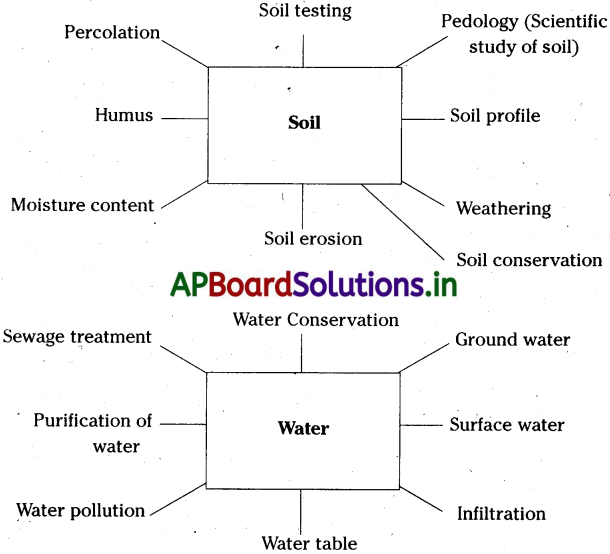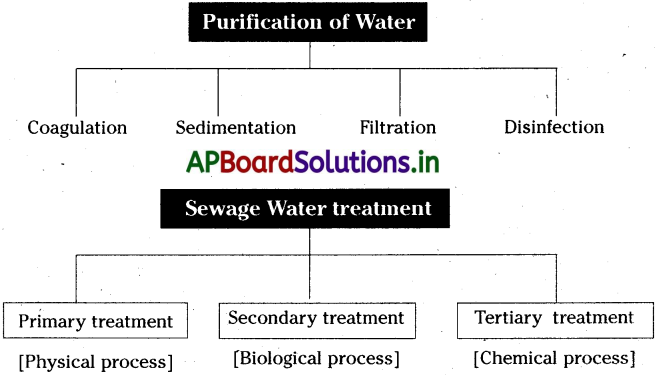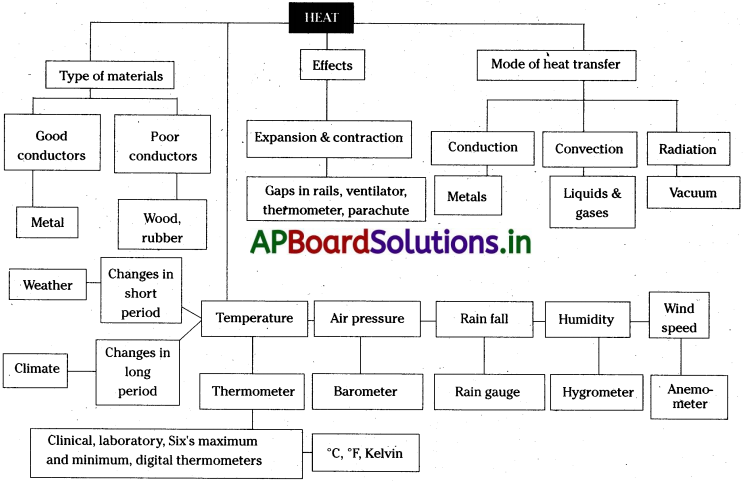Students can go through AP Board 6th Class Science Notes 4th Lesson నీరు to understand and remember the concept easily.
AP Board 6th Class Science Notes 4th Lesson నీరు
→ రోజు వారి పనులకు, వ్యవసాయం మరియు పారిశ్రామిక ప్రయోజనాల కోసం మనకు నీరు అవసరం.
→ కాలువలు, ట్యాంకులు, చెరువులు, నదులు మొదలైన వివిధ నీటి వనరుల నుండి మనకు నీరు లభిస్తుంది.
→ భూమి యొక్క ఉపరితలం 3/4వ వంతు నీటితో ఆక్రమించబడింది.
→ భూమిపై లభించే నీటిలో 3% మాత్రమే మంచినీరు.
→ మనం నీటి కోసం వర్షాలపై ఆధారపడతాము.
→ బావులలో లేదా ఇతర నీటి వనరులలో నీటి మట్టాలు వర్షాకాలంలో పెరిగి, వేసవి కాలంలో తగ్గుతాయి.
→ మంచు (ఘన రూపం), నీరు (ద్రవ రూపం) మరియు నీటి ఆవిరి (వాయు రూపం) అనే మూడు రూపాల్లో భూమిపై నీరు ఉండవచ్చు.
![]()
→ నీటిని నీటి ఆవిరిగా మార్చే ప్రక్రియను బాష్పీభవనం అంటారు.
→ నీటి వనరుల ఉపరితలాల నుండి ఎండకు నీరు నిరంతరం ఆవిరైపోతుంది.
→ బాష్పీభవనం ద్వారా గాలిలోకి ప్రవేశించే నీటి ఆవిరి ఆకాశంలో మేఘాలను ఏర్పరుస్తుంది.
→ నీటి ఆవిరి యొక్క చిన్న బిందువుల నుండి మేఘాలు ఏర్పడతాయి.
→ నీటి ఆవిరిని నీటిగా మార్చే ప్రక్రియను సాంద్రీకరణ అంటారు.
→ భూమి యొక్క ఉపరితలంపై ఉన్న నీటి బాష్పీభవనం మరియు ఘనీభవనం ప్రక్రియల వలన వర్షం పడుతుంది.
→ ఆకాశం నుండి నీరు వర్షం, మంచు, స్ట్రీట్ లేదా వడగళ్ళు రూపంలో నేలను చేరుతుంది. దీనిని అవపాతం అంటారు.
→ సముద్రం మరియు భూమి మధ్య నీటి ప్రసరణను నీటి చక్రం అంటారు.
→ కర్మాగారాలు, అటవీ నిర్మూలన మరియు కాలుష్యం ఇప్పుడు భూతాపానికి కారణమవుతున్నాయి.
→ గ్లోబల్ వార్మింగ్ నీటి చక్రానికి భంగం కలిగిస్తుంది మరియు తక్కువ వర్షపాతం లేదా ఎక్కువ వర్షపాతం కలిగిస్తుంది.
→ అధిక వర్షాలు వరదలకు కారణం కావచ్చు, ఎక్కువ వర్షాలు లేకపోవడం కరువుకు కారణం కావచ్చు.
→ భూమిపై లభించే నీటి పరిమాణం తక్కువ, కాబట్టి దీనిని జాగ్రత్తగా ఉపయోగించాల్సిన అవసరం ఉంది.
→ నీటి కొరతను నివారించే ఏకైక పద్దతి నీటి సంరక్షణ.
→ నీటి వనరులు : నీరు వ్యవసాయ, పారిశ్రామిక మరియు గృహనిర్మాణం వంటి వివిధ కార్యకలాపాలకు ఉపయోగపడుతుంది. ఈ నీరు లభించే ప్రాంతాలను నీటి వనరులు అంటారు.
![]()
→ బాష్పీభవనం : నీటిని, నీటి ఆవిరిగా మార్చే ప్రక్రియను బాష్పీభవనం అంటారు.
→ సాంద్రీకరణం : నీటి ఆవిరిని, నీటిగా మార్చే ప్రక్రియను సాంద్రీకరణం అంటారు.
→ అవపాతం : వాతావరణంలోని నీటి ఆవిరి ఘనీభవించి భూమిపై నీరు లేదా మంచుగా పడటం.
→ జలచక్రం : నీరు సముద్రము, వాతావరణం మరియు భూమి మధ్య ఒక వలయంలా తిరుగుతుంది. దీనినే జలచక్రం అంటారు.
→ మేఘం : నీరు లేదా మంచు స్ఫటికాల చిన్న బిందువులు అనేకం కలసి మేఘం ఏర్పడుతుంది.
→ నీటి ఆవిరి : నీటి వాయు రూపంను నీటి ఆవిరి అంటారు.
→ వాతావరణం : వాతావరణం భూమి చుట్టూ ఉండే వాయువుల మిశ్రమం.
→ ప్రవాహం : నీరు ఒక ప్రాంతం నుండి మరొక ప్రాంతానికి చేరటం.
→ నీటిబిందువులు : చిన్న పరిమాణంలో ఉండే నీటి తుంపరలు.
→ మంచు : ఘనీభవనం కారణంగా ఉదయం వేళలో వాతావరణంలో కనిపించే బిందువుల రూపంలోని నీరు.
→ వర్షం : మేఘాల నుండి పడే నీటి చుక్కలు.
→ వడగళ్ళు : వర్షంతో పాటు పడే మంచు (గడ్డకట్టిన నీరు).
→ చల్లని గాలి : తక్కువ వేగంతో వీచే గాలిని చల్లని గాలి అంటారు.
→ పవనం : వీచే గాలి కరవు
→ : తక్కువ వర్షాలు వలన పంటలు లేని స్థితి. వరదలు
→ : అధిక వర్షాల వలన ఏర్పడే నీటి ప్రవాహం.
→ వలస : తాత్కాలికంగా లేదా శాశ్వతంగా స్థిరపడటానికి ఒక ప్రదేశం నుండి మరొక ప్రదేశానికి ప్రజలు వెళ్ళటం.
→ రుతుపవనాలు : కాలాన్ని బట్టి నేల పైకి వీచే గాలులు.
→ నైరుతి రుతుపవనాలు : అరేబియా సముద్రం నుండి నైరుతి దిశగా భారతదేశానికి ప్రవహించే కాలానుగుణ గాలులు.
→ ఉత్తర-తూర్పు రుతుపవనాలు: నైరుతి రుతుపవనాలు భారతీయ ప్రధాన భూమి నుండి వెనక్కి వెళ్లినప్పుడు ప్రవహించే కాలానుగుణ గాలులు. ఇవి బలహీనమైన వర్షమును కలిగిస్తాయి.
![]()
→ మంచు : నీటి ఆవిరి నుండి నేరుగా ఘనీభవించి ఏర్పడే నీటి బిందువులు.
→ అటవీ నిర్మూలన : మన అవసరాల కోసం అడవులను నరకటం.
→ కాలుష్యం : పరిసరాలలోకి మోతాదుకు మించి హానికర పదార్థాల చేరిక.
→ భౌగోళిక వెచ్చదనం : కాలుష్యం వలన భూమి ఉష్ణోగ్రత పెరగడం.
→ విపత్తు : ప్రకృతి లేదా మానవ తప్పిదాల వలన కలిగే నష్టం.
→ టాక్సిన్స్ : ఆరోగ్యానికి నష్టం కలిగించే విష పదార్థం.
→ మంచినీరు : తక్కువ ఉప్పు సాంద్రత కలిగిన నీరు. ఇది రోజువారీ ప్రయోజనాల కోసం ఉపయోగించబడుతుంది.
